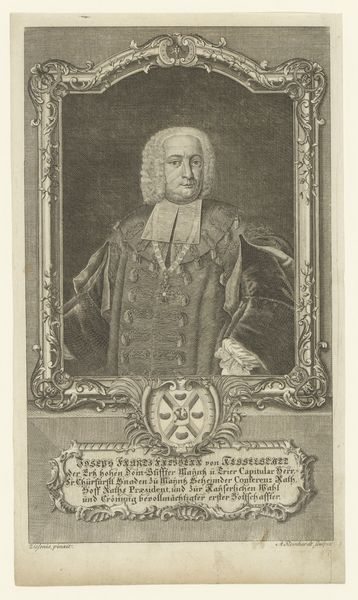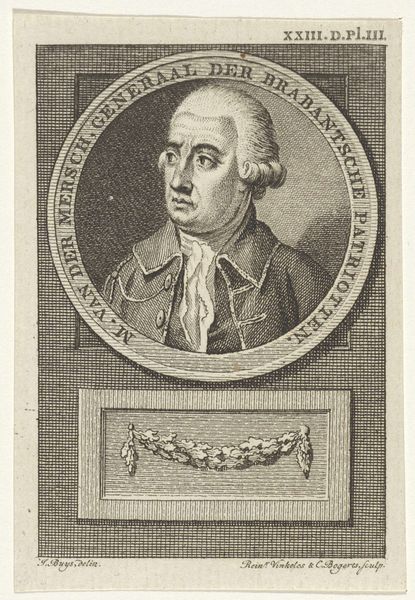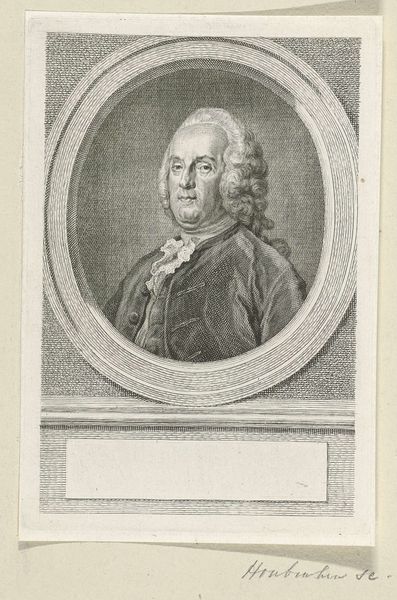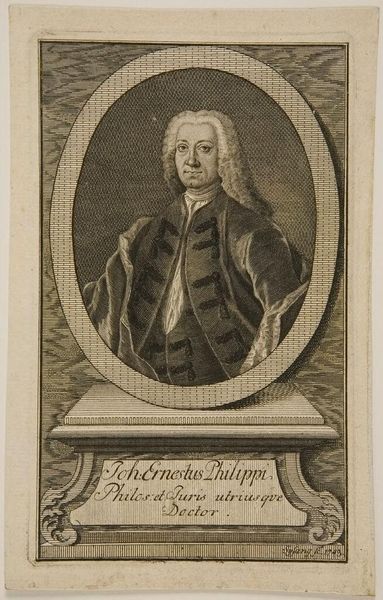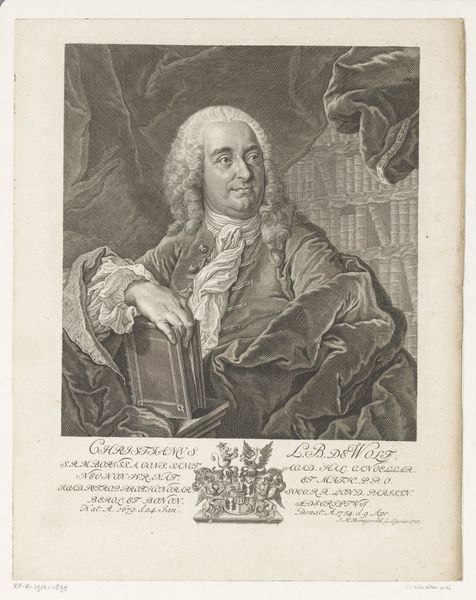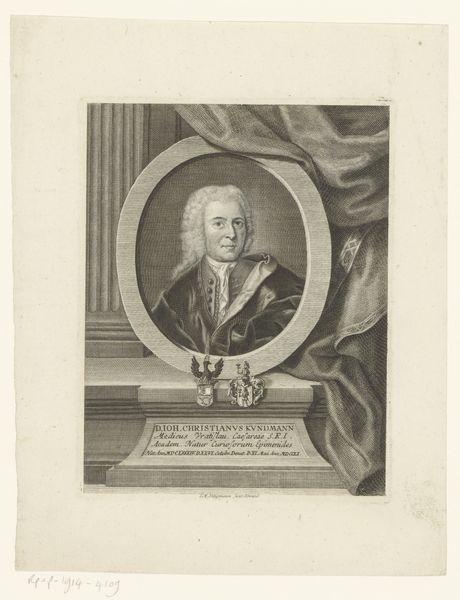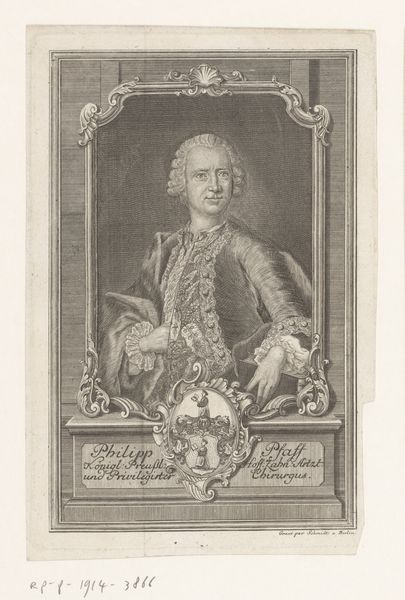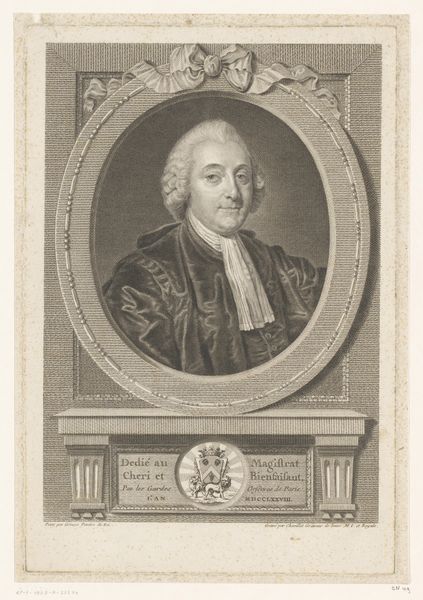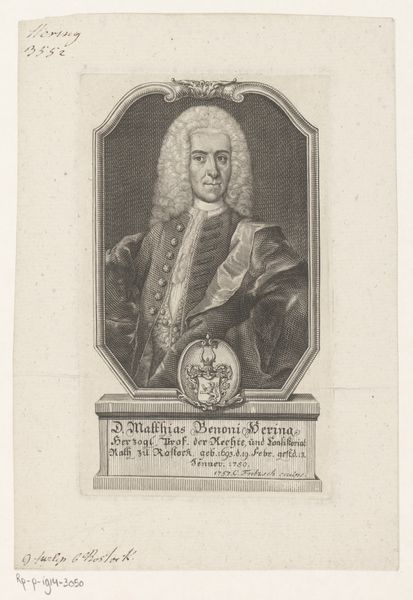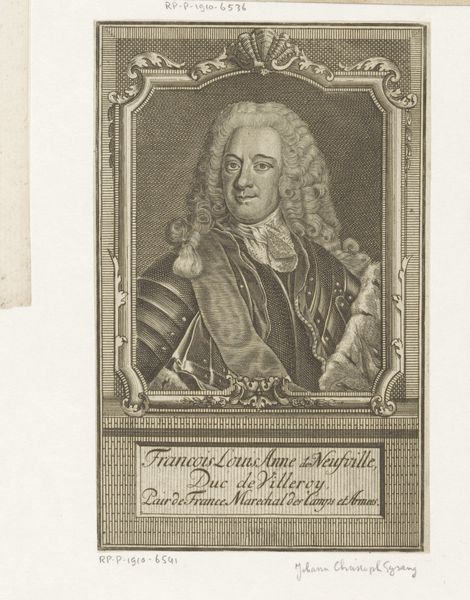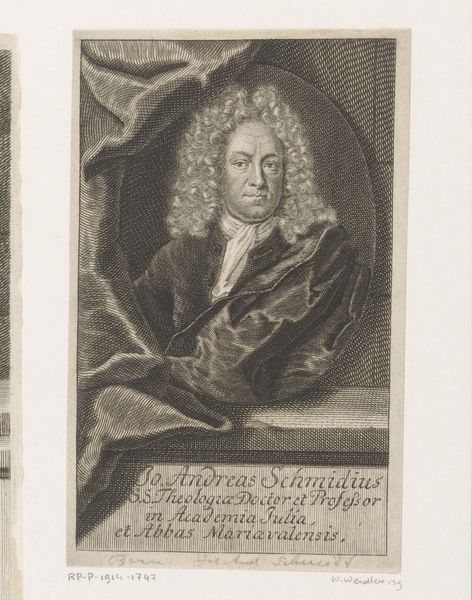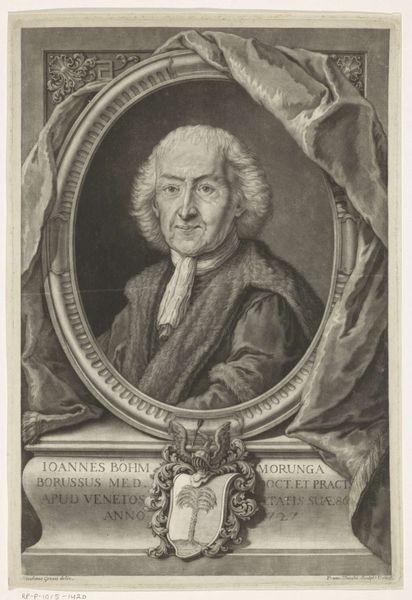
Dimensions: height 136 mm, width 93 mm
Copyright: Rijks Museum: Open Domain
Curator: This engraving presents a portrait of Christian Wolff, dating sometime between 1763 and 1804, by Carel Jacob de Huyser. What strikes you about it initially? Editor: Well, the texture is fascinating. It’s the type of work where I find myself immediately wondering about the engraving process, imagining the labor that went into all those meticulously etched lines. Curator: Exactly! As a print, the process of production is central. This wasn’t a unique object, but part of a potentially large edition. Its creation and dissemination are as much a part of the story as the subject himself. Think about the engraver's skill in translating form into line and the societal demand that fueled such portraiture. Editor: True. Considering the historical context, the engraving likely served as a form of accessible portraiture, disseminating Wolff's image within intellectual circles and beyond. Wolff himself, with his philosophies and influence, shaped institutions of higher learning, his persona almost a brand in his time. How was it to reach wider audiences then? Curator: I see your point, but the texture and form are integral. Look closely at the way the engraver used different densities of lines to create areas of light and shadow, mimicking the appearance of painted portraits, for instance. Editor: The way the background curtain and bookcase are rendered—almost overwhelming—really tells us something. This wasn't just a likeness; it was a constructed image meant to convey status, intellectual heft, almost an aura of established power. It reveals so much about 18th-century ideas about who mattered and whose image deserved widespread distribution. Curator: Indeed. Every single mark on that plate was a deliberate choice in a socio-economic structure which defined its production. Even its potential use - as perhaps a frontispiece or to commemorate someone’s works adds meaning. Editor: So, it’s a portrait but also a symbol of an era and of the social forces determining art production and appreciation at that time. An image created through deliberate labour reflecting existing social norms. Curator: Precisely, understanding both informs a richer engagement with the object.
Comments
No comments
Be the first to comment and join the conversation on the ultimate creative platform.
